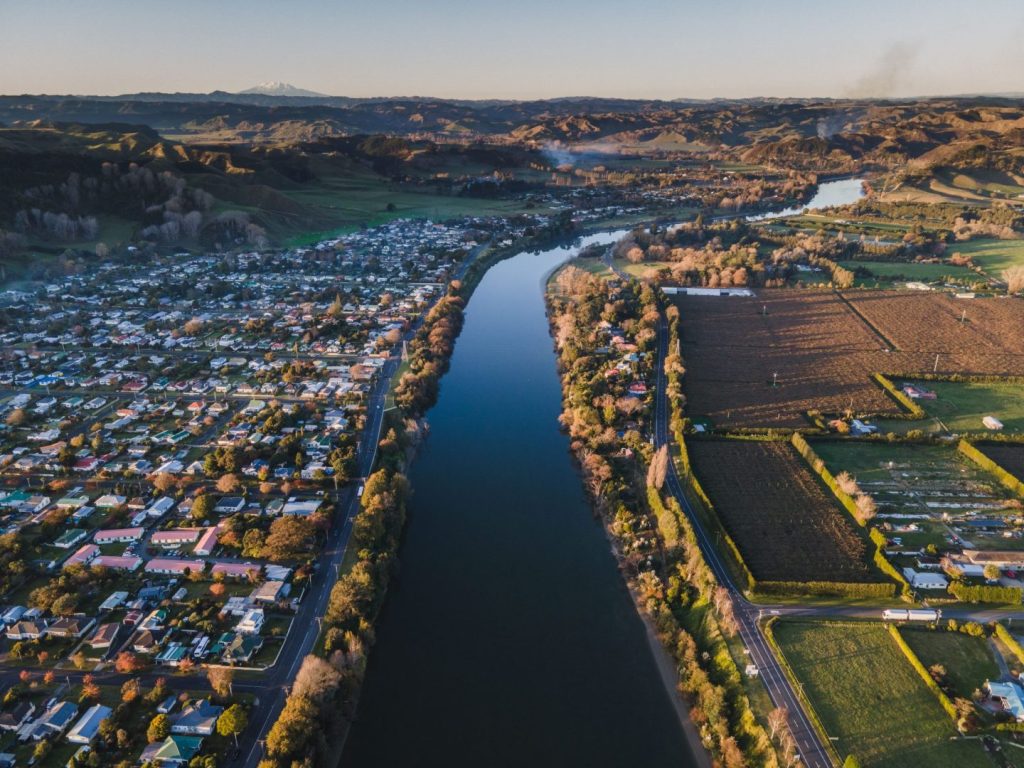Explore the sights of Whanganui
City Centre
Whanganui’s CBD is compact and filled with interesting spots to visit, enjoy and eat & drink at.

Mountains to Sea Cycle Trails
The Mountains to Sea Cycle Trails are a breath-taking way to explore the Whanganui Region
From Tongariro National Park’s volcanic grandeur to the magical wilderness of the Whanganui River and the beautiful Tasman Sea coast, the Mountains to Sea cycle trails show off the sights, places and people that make the Whanganui region so special.
Known in te Reo Māori as Ngā Ara Tūhono, these connected pathways take cyclists to new adventures in a remarkable part of New Zealand. Connecting two national parks, the ride navigates alongside the tributaries and waters of the Whanganui River – with all its special stories to discover.
Mountains to Sea – Ngā Ara Tūhono is comprised of multiple sections that can be joined together for a multi-day adventure, or enjoyed as day rides to suit your ability, interests and itinerary.
New Zealand Glassworks – Te Whare Tūhua o Te Ao
Home to the heritage craft of art glass, New Zealand Glassworks – Te Whare Tūhua o Te Ao is the national centre for art glass located in the heart of old Whanganui.
The town has a long history with art glass and is home to many practitioners working within this extraordinary heritage craft. New Zealand Glassworks (NZG) is located in the old printing press building for the local newspaper The Chronicle. This unique environment provides a vibrant centre for artists to create, exhibit, and to be inspired.
NZG is dedicated to the on-going development of all glass artists and provides them with the best possible opportunities and education through the facility. The open access studio hosts many of the country’s leading glass artists and you can see first-hand glass artists indulging in their craft all year round.
The interactive glass centre entertains the greater community with hot glass demonstrations, exhibitions, education opportunities and short course workshops. Each month throughout the year NZG runs paperweight and beginner glass blowing workshops. These workshops are extremely popular and the year books out fast, so if you’re interested make sure you sign up quickly.
The NZG gallery is Whanganui’s premier glass art gallery featuring some of New Zealand’s most respected and collected artists. The art glass is thoughtfully curated in a unique gallery space, with a focus on collector’s pieces and limited-edition sculptures.
The contemporary gallery and exhibition mezzanine floor provide a great opportunity to see works by over 30 artists including David Murray, Te Rongo Kirkwood, Emma Camden, Kathryn Wightman, Wendy Fairclough, Evelyn Dunstan, Philip Stokes and many more.
NZG is open seven days a week from 10am to 4:30pm and closed on public holidays. Please check their online calendar to see who is working on the day of your visit, or when the next scheduled workshop will be running.
Scenic flights in Whanganui
See Whanganui from above for a scenic experience you’ll never forget
Whanganui is beautiful from every angle, not least of all from above. There are scenic helicopter flights available to take in Whanganui and its surrounds, to visit the Bridge to Nowhere, and to take in the scenery from Whanganui to Mount Ruapehu and back.

















































